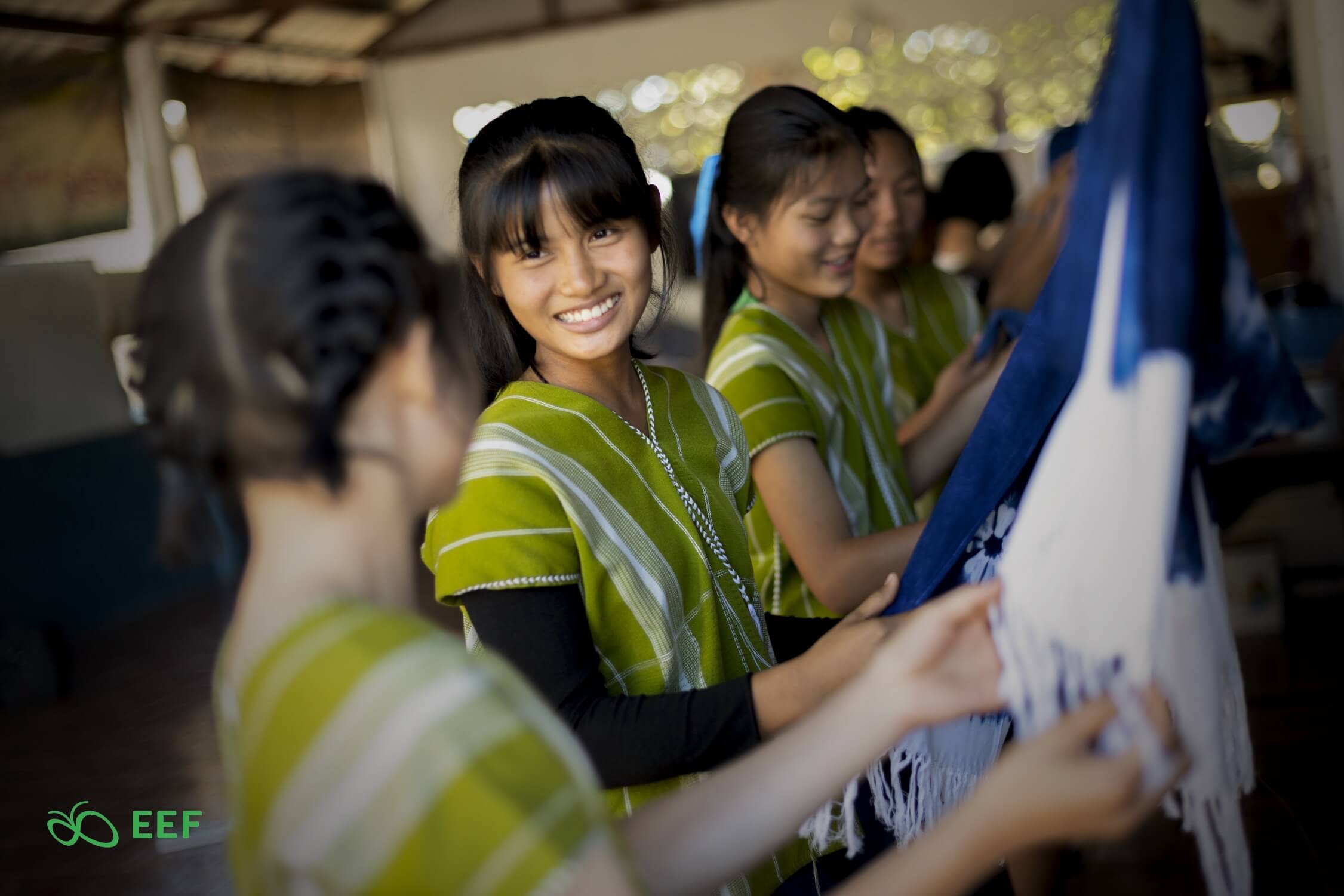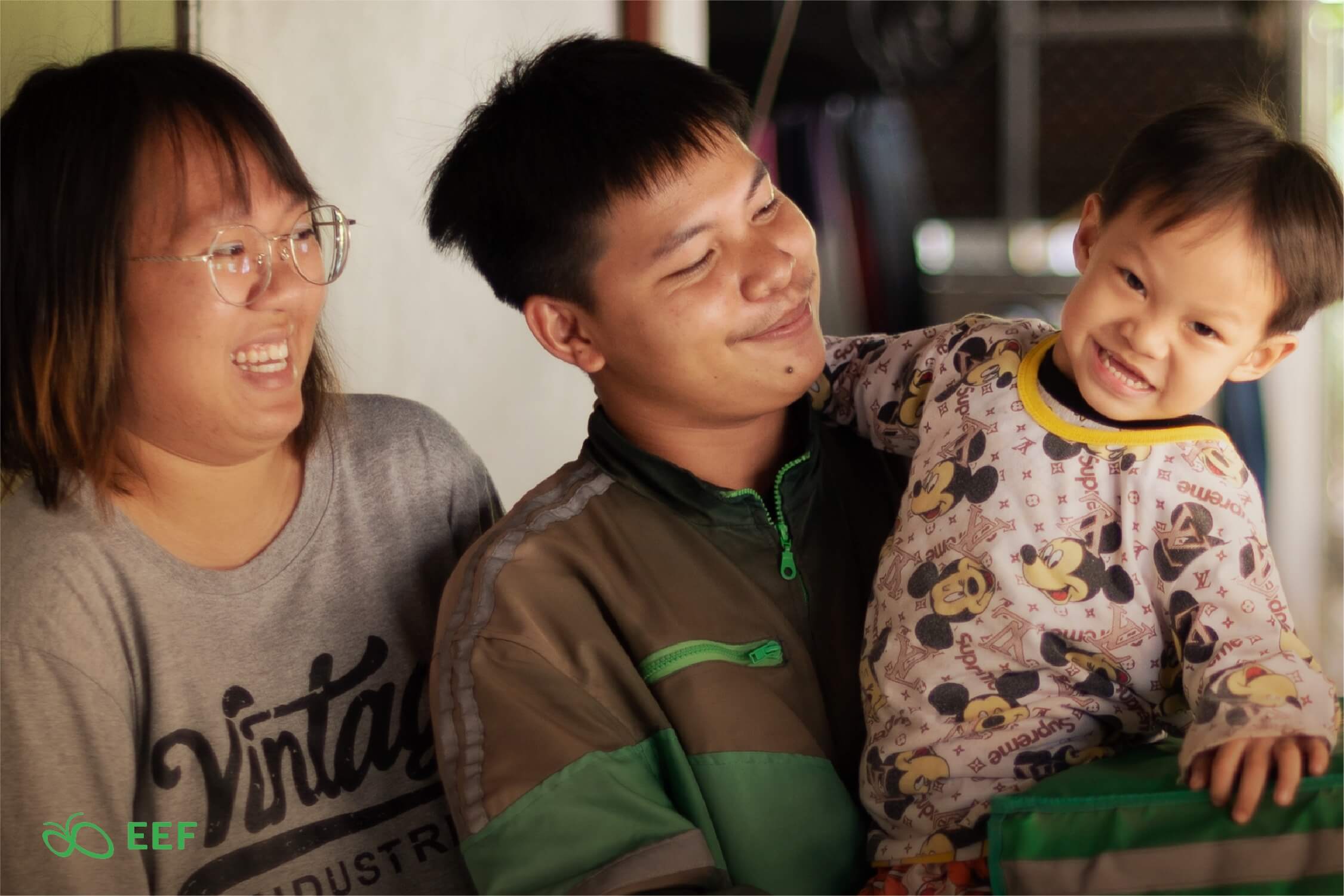Learning to Learn Through Play
An innovative learning modality works for a remote school in Chiang Mai with EEF’s help
“Children learn as they play. Most importantly, in play children learn how to learn,”
says O Fred Donaldson, an internationally well-known play specialist.
The saying aptly describes what pupils and teachers at Ban An Jadsan School at a remote hilltop in Chiang Mai are trying to do. Teachers are making learning into playing, and through playing pupils learn how to learn.
It’s a three-hour drive from the northern city of Chiang Mai to the hilly Doi Tao district. As you approach what appears to be an unremarkable school, you get little sense of what awaits you. On the inside, this small school boasts, perhaps surprisingly, an unorthodox teaching method for a Thai school.

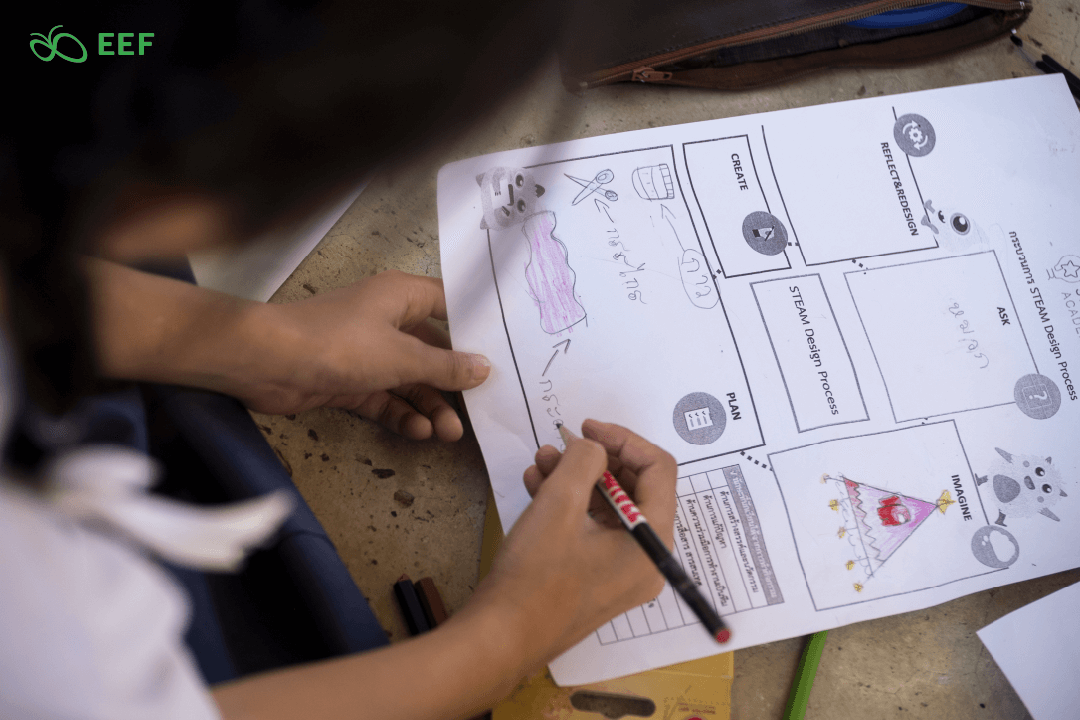
In 2017, the Chiang Mai School Education District 5 was promoting the StarFish Labz program for its schools. Ban An Jadsan School decided that it could offer a new challenge for its students.
Two components make up the program focusing on active learning. Maker Space is a creative space that allows students to show their creativity and express themselves fully when they speak. The teacher is merely there to guide them if they need help. The STEAM Design Process is a learning framework involving five-steps: questioning, imagination, planning, creation and reflection.
Ban An Jadsan spends the funds on buying simple items, such as scissors, cutters, and glue guns. But, according to 11-year-old Jintapa Lamong or Kwang, the money was well spent. She said she felt her creativity was being restricted when the school was short of funds. But once the EEF grant was won, “now I can create what I imagine.” The thing she likes about StarFish Labz is that it lets her work with her head and her hands. She has to plan things out and then get things done. But what she likes best, she said, is that she gets to work with pupils from other classes and all the teachers are there.
“It makes me want to learn more,”
Kwang said.
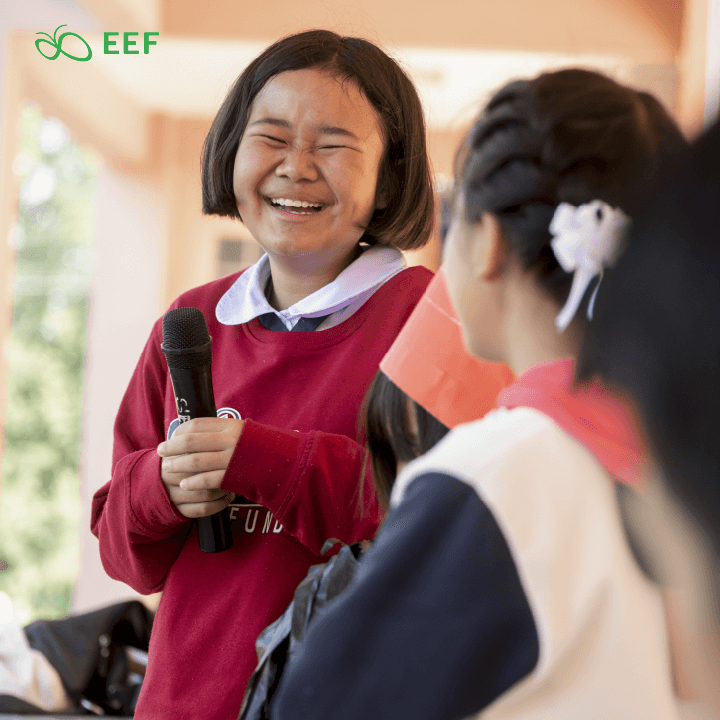
The StarFish Labz class takes place three times a week. All 163 pupils, aged between 7 and 12, congregate in one large room. Like most youngsters, they feel like playing rather than learning. And they’re in luck because that’s what they would be doing – learning by playing.
The challenge today is to make something related to Christmas Day.
The work is divided up by how difficult it is – the 7- and 8-year-old students make Christmas hats, the 9- and 10-year-olds make a Christmas tree for the stage while the 11- and 12-year-olds design costumes for the festival.


The children are each given a piece of A4 paper to draw what they would like to make and write a plan of what to do, the materials to be used and what obstacles they might encounter, along with possible solutions.
In the fun-filled class, they are able to ask questions, use their imaginations, make plans, take actions, reflect and share ideas within their groups.
Ten-year-old Nannalin Puduen, or Lily, said the program helped her overcome her shyness.
“Usually, I would keep to myself; I was afraid to talk to other people. But now, because I have to present my work in front of all my school mates, I’m more confident in expressing myself,”
Lily said.
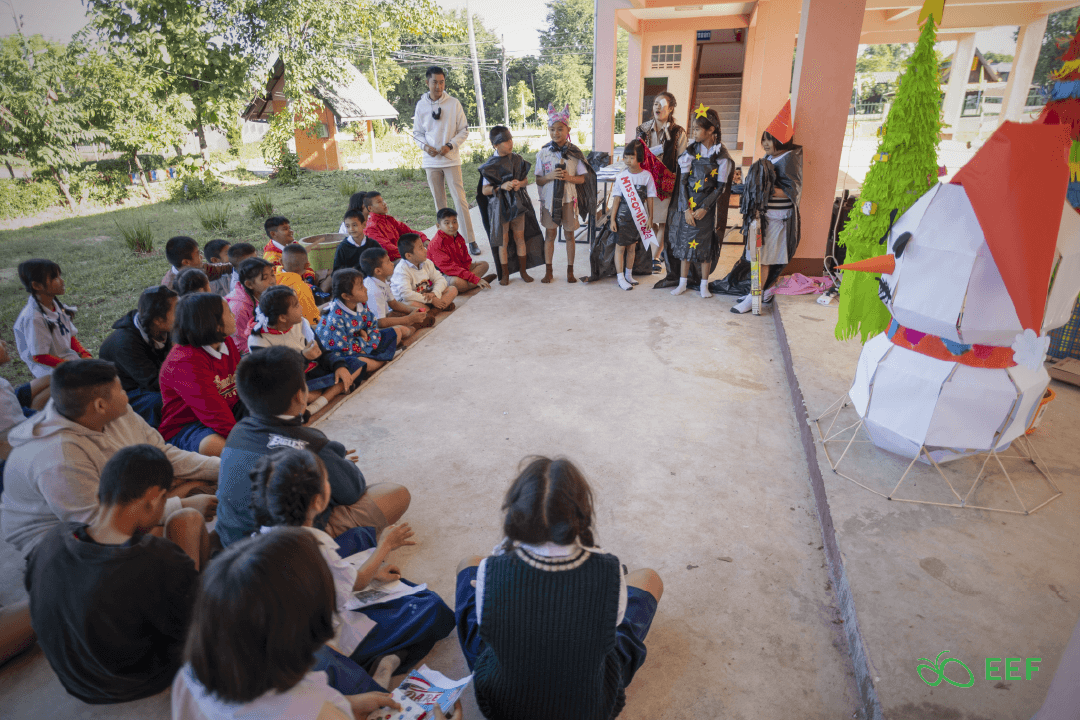
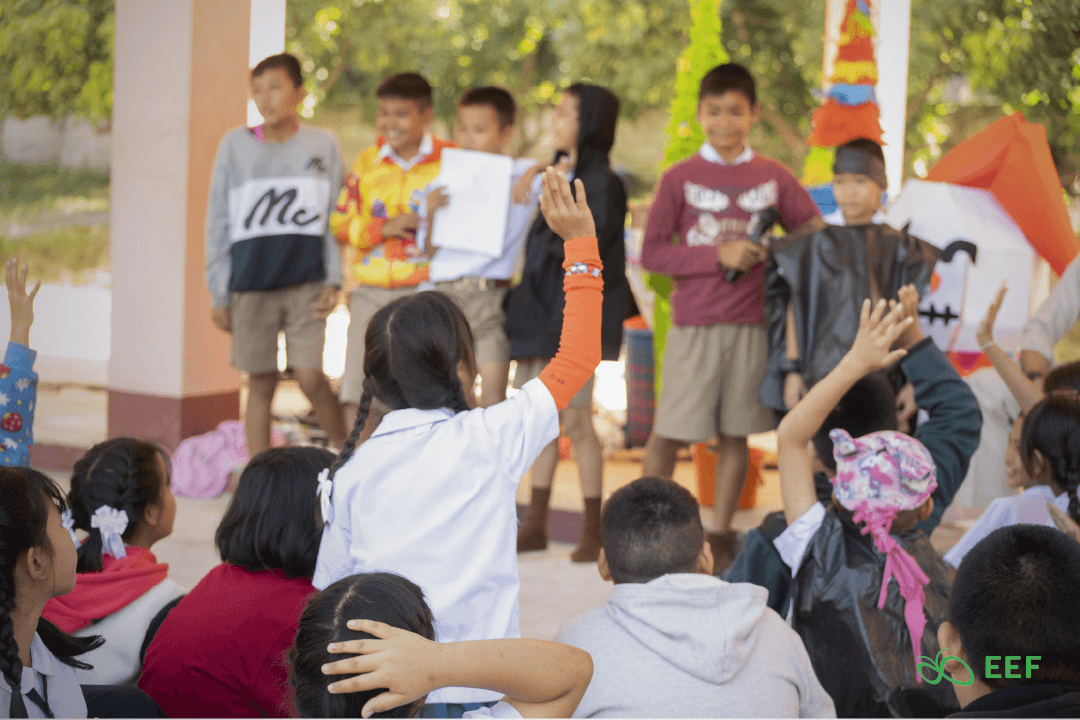
Getting the program up and running is a learning process for teachers as well.
Kansiri Ladee, a class teacher for the 7-year-olds, said: “This course stimulates children so that they dare to think and do something new. It trains children to plan and solve problems for themselves.”

Then she added: “I have to admit I didn’t understand its underlying concept at first. I knew it’s supposed to be child-centered, but I just couldn’t wrap my head around it.
“It has opened up a new perspective for me. Once I joined this activity, I got to learn alongside the students. Being young, they have imaginations that exceed our expectations!”
For Teerapon Khamvichai, the science teacher for the 10- and 11-year-olds, the program gave him an idea to improve teaching he was looking for.
Before, he taught the pupils steps in solving a problem. Now, he lets them figure it out themselves and only gives them clues when they are stuck.
“This is a very efficient way of learning. What used to take five hours now takes only three. The children think and work by themselves. They don’t need to memorize so many things like before. It speeds up learning,”
he said.
The program is an eye-opener for Pathom-3 teacher Choatmanee Jiratong.
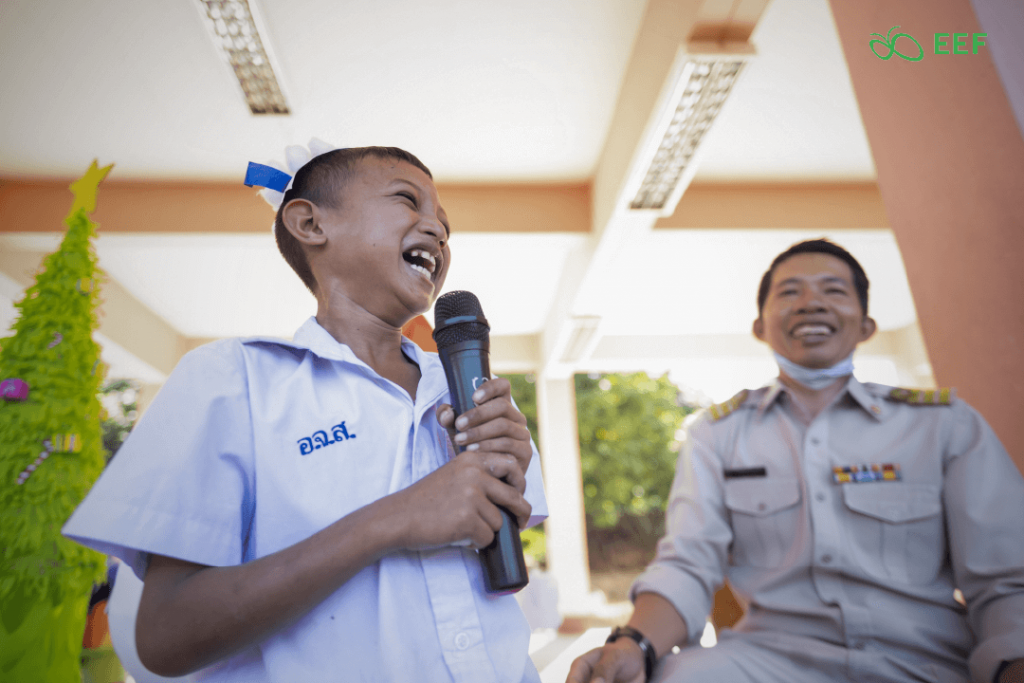
“Before, we only taught the children to learn by rote. Now we have to transform ourselves,”
Choatmanee said.
The StarFish trainers instructed us to be the children’s coaches. I was skeptical about it. The kids couldn’t even memorize the whole set of alphabets. But now that I’m in the program, I realize they didn’t want to see the end products; they want to see the ‘process.’
“In coaching, you don’t care where the journey would end. It’s along the way that you have to see what the children get from it.”
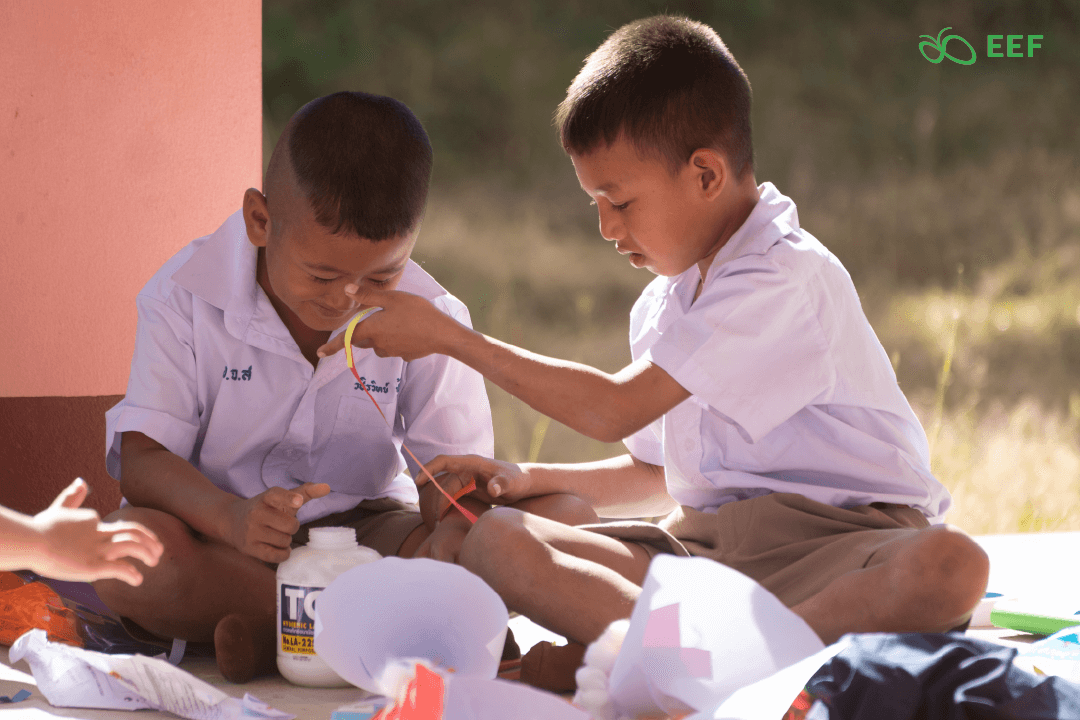
Others Impact Stories
When Opportunity Changes Life Education Opens Up A World of Possibilities for the Future
When Opportunity Changes Life Education Opens
Meet A Young Activist Who Battles Relentless Storms for the Right to Choose One’s Own Identity
Meet A Young Activist Who Battles
When a School Becomes a Market of Opportunities
When a School Becomes a Market
Learning to Learn Through Play
Learning to Learn Through Play
Life at the end of the tunnel
Life at the end of the




